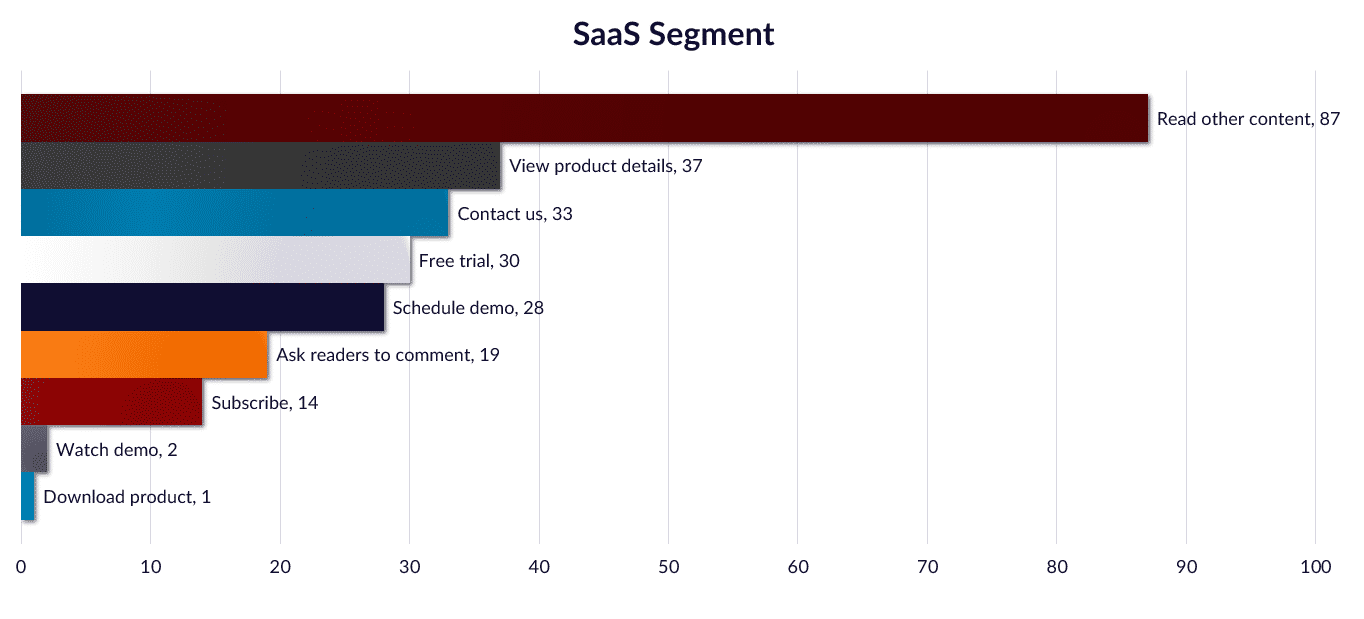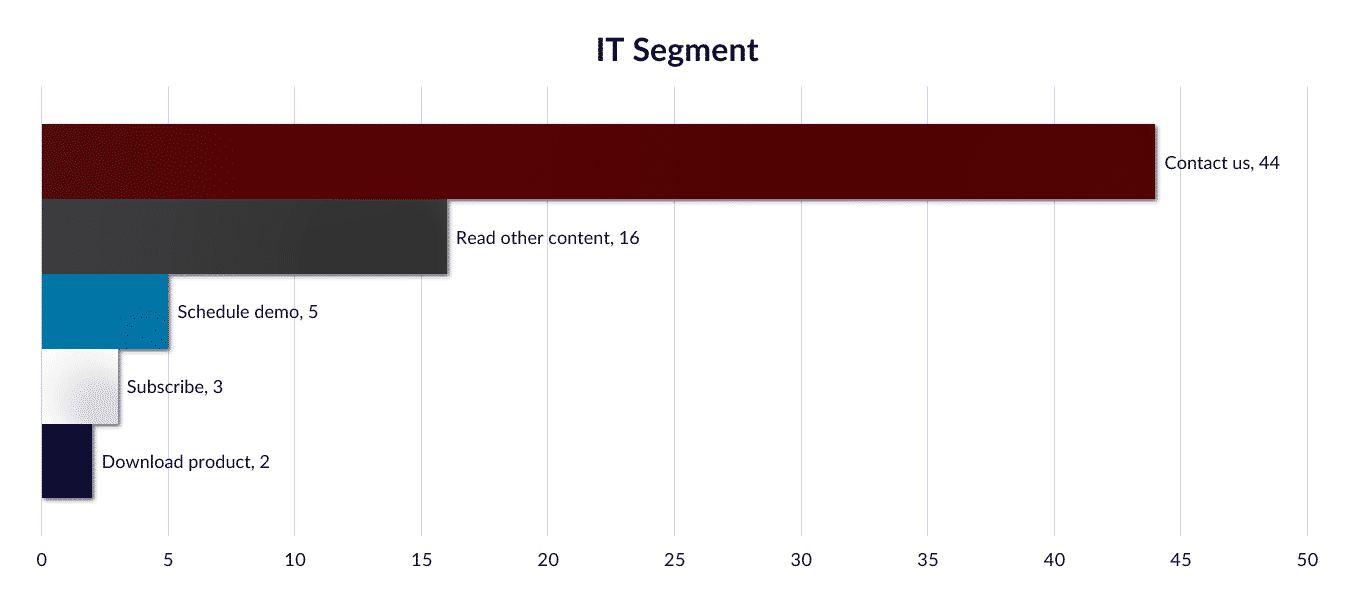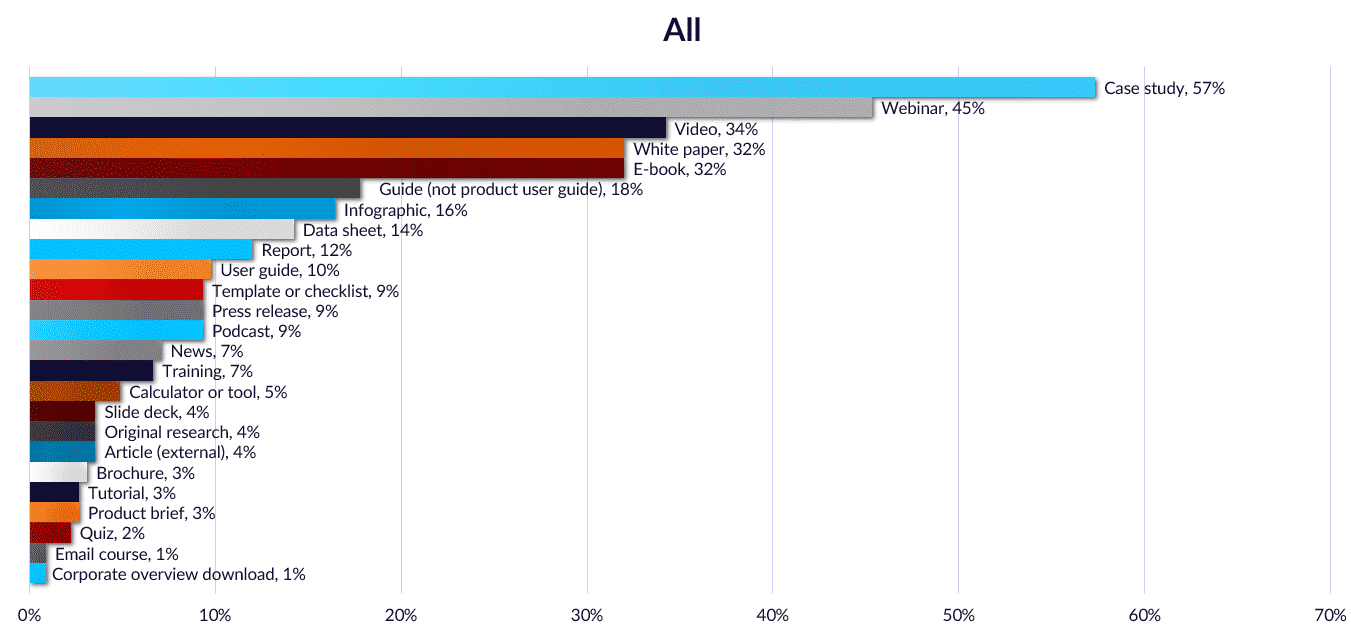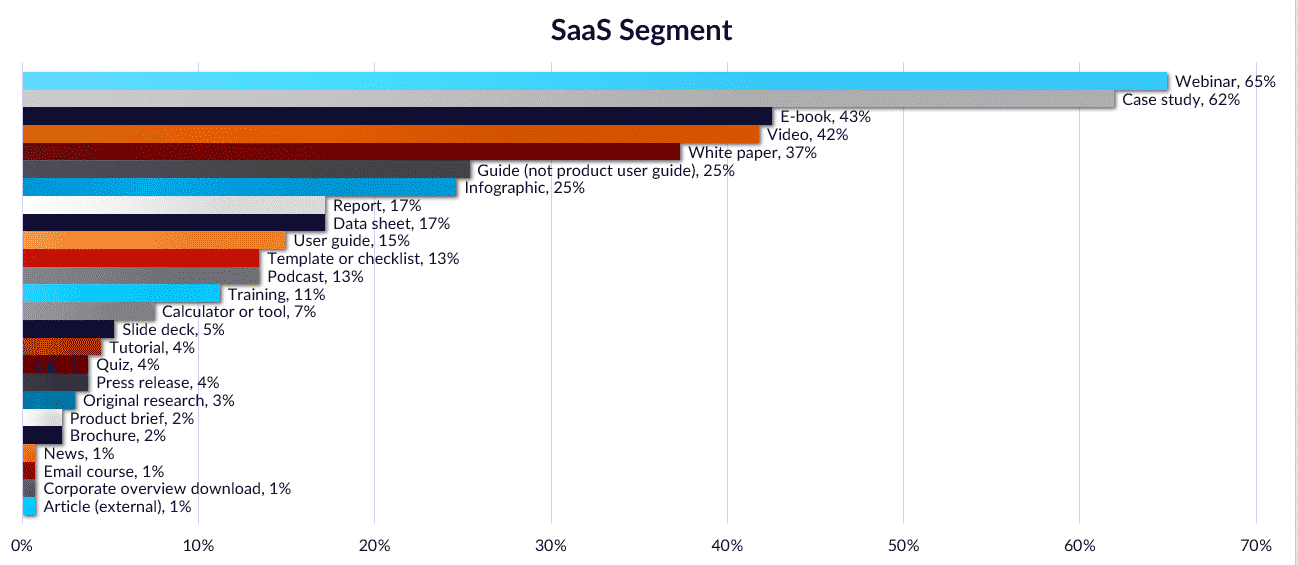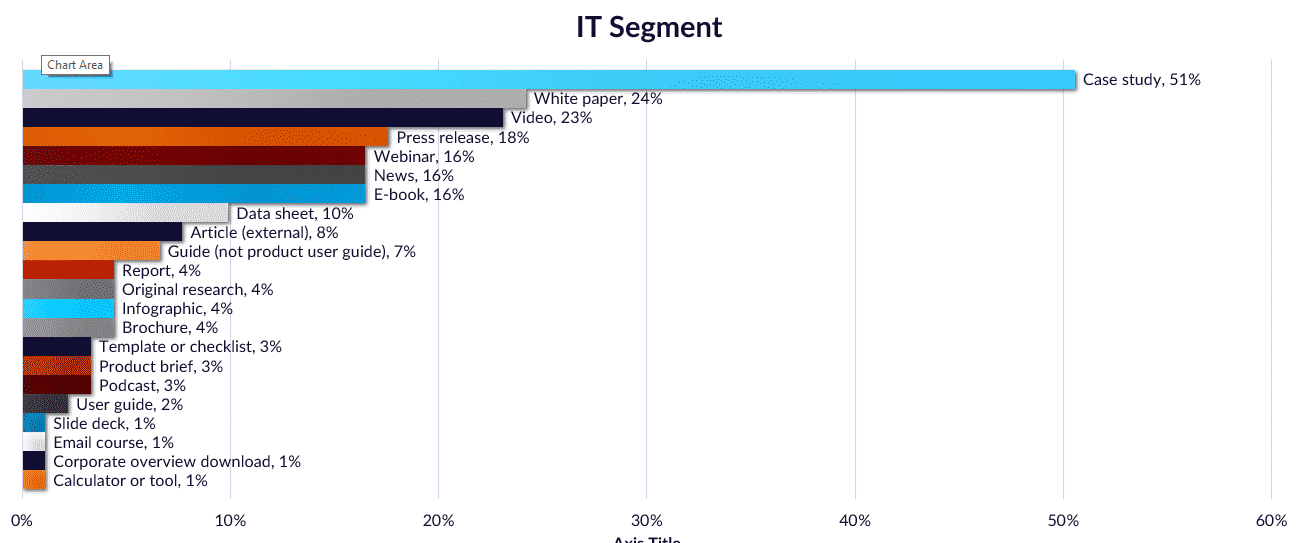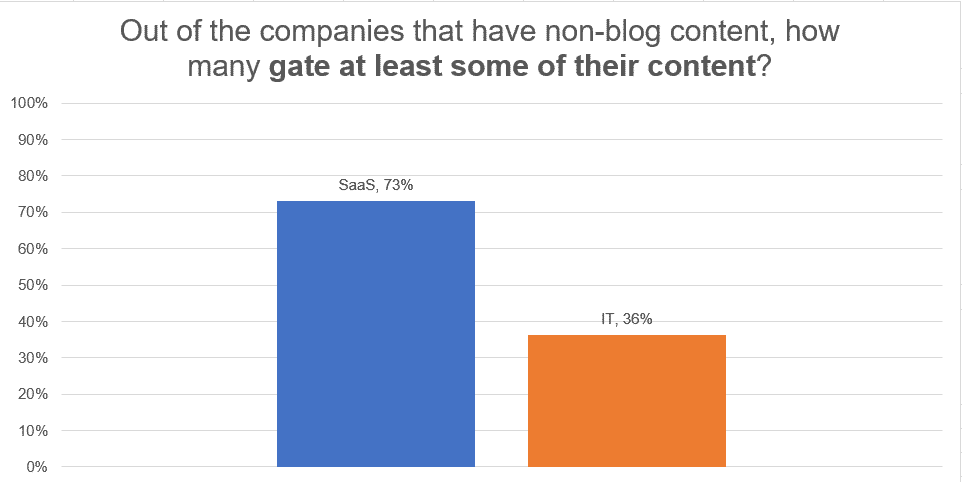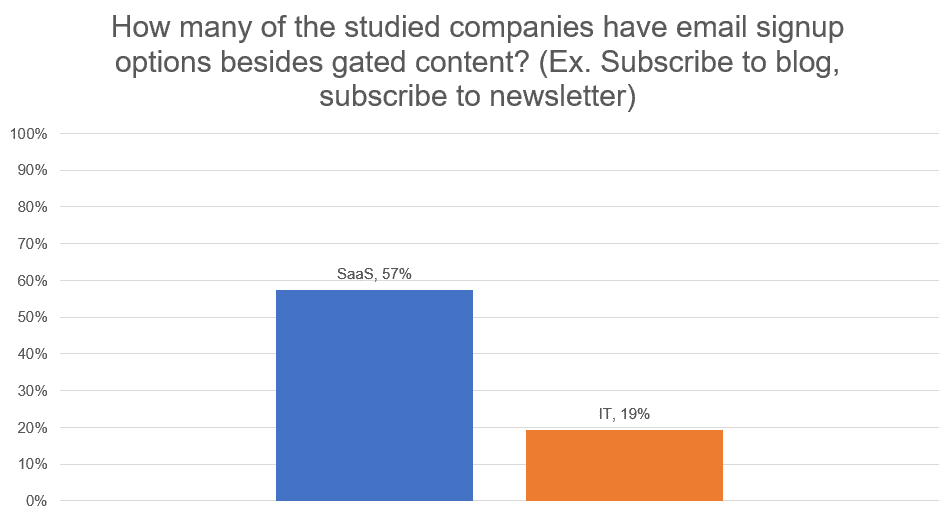Earlier this year I undertook a research project that I thought was going to blow up some of my beliefs about content marketing.
At least, that’s what I hoped would happen.
Yes, I wanted to be proven wrong. Why? Because that’s how we learn. When it comes to business, holding onto beliefs without occasionally checking their factuality is dangerous at best. Fatal to the business at worst.
Industries change. Customers change. Markets change.
Change is the only constant in business.
We have to continually check ourselves, our data, our strategies regularly or our businesses simply won’t survive the changes.
For this research project, I looked at 300 top-performing tech companies: a mix of 150 SaaS companies and 150 IT companies. The list of SaaS companies were the top-growing private companies in the U.S. from the Q2 2019 SaaS 1,000 list, and the list of IT companies were the top fastest-growing IT management, IT system development, and IT services companies on the 2018 Inc 5,000 list.
My team and I scoured the websites of all 300 companies to see what they were doing with their content marketing.
Some of the results were pretty fascinating. But I have to admit, very few of the results changed my beliefs about how companies are using content marketing in the Experience Economy — even with companies selling enterprise solutions, which is my particular area of expertise.
And lest you think that not many of these companies are selling solutions to large and enterprise business, here’s your first taste of the data. Of the 300 companies, 66% of the SaaS companies are selling enterprise solutions, while 77% of the IT companies are.
Looking at a Core Component of Most Content Marketing Strategies: the Company Blog
Even with the dramatic growth and expansion of content marketing as a practice, and even with customers demanding a higher value, more personalized experience with brands, when most people think of content marketing, they think of blogs.
And hey, blogs can still be a great medium. I’m not dismissing them at all. But for the company blog to work as a marketing tool, blogs have to be part of the broader marketing strategy.
Unfortunately, the company blog seems to still be an afterthought for many tech companies today.
Of the 300 companies we looked at, 79% have blogs. But the industry breakdown is pretty telling: 98% of the SaaS companies have blogs, while 59% of the IT companies did. (Interestingly, of the companies that were selling enterprise solutions, 80% had blogs. This makes me think that blog posts may still be working well to help companies connect with enterprise buyers.)
Of the IT companies with blogs, 9% posted only PR content.
Of the SaaS companies with blogs, 44% used their blogs to teach technical how-to’s, helping users learn how to use the product.
The calls to action (CTAs) are where things really get interesting, though.
When we were looking at the blog CTAs, we were looking for contextual CTAs. Not opt-in boxes tacked onto the end of the post. Not “further reading” sections. We were looking to see how many companies wrote blog posts that led the reader to the right next step on their journey.
Of the 300 companies, 79% have blogs — and nearly 20% of those companies that have blogs have no CTA in any of their blog posts.
Let me put this into context.
About 15% (45 out of the 300) of these companies are spending budget and time producing blog posts … that create a dead-end for their customers.
Look, not every blog post needs a CTA. Some blog posts are purely informational or authoritative — and those are good, too. But at least some blogs should be moving the reader forward on their journey to becoming a customer and/or a raving fan. Some blogs should be helping the reader to the next step.
Now for the companies that were including CTAs in their blog posts, let’s take a closer look at what they were doing …
The most common blog CTA for SaaS was to read other content on the site, and the second most common was a CTA inviting the reader to view product details. For IT, first place (by FAR) for blog CTA was “contact us,” and second place was a CTA calling the reader to check out other content on the site.
Now, you content marketers reading this report might argue that for the IT companies, “contact us” isn’t a great CTA … but I beg to differ. Remember, 77% of these companies are selling solutions to large and enterprise companies — and that takes conversation. Sometimes many conversations between many stakeholders. When done right, if the blog post naturally, organically leads the reader to want to reach out to the company to learn more about their solution, “contact us” is a perfectly reasonable request in the enterprise IT world.
Beyond the Blog: Other Content Types
A robust content strategy should include much, much more than a company blog — and the majority of these tech companies are on the right track.
Of all the companies we studied, 75% have other marketing content besides blogs on their websites (89% SaaS, 61% IT).
Of these companies that have other content, 78% have educational content (92% SaaS, 57% IT) and 79% have PR content (79% SaaS, 71% IT).
Let’s dig into the various content types these companies are using to woo customers, shall we?
Overall, the most common content type (other than a blog) is case studies (57%) followed by webinars (45%).
The Gate Question
GDPR complications aside, gating content (requiring an email address in exchange for your content) is still a good way to encourage customers to join your email list and stay connected. And of course, once a subscriber is on your list, it becomes easier to nurture the relationship and provide a better customer experience with even more valuable and targeted content.
So I wondered, how many of these tech companies were gating at least some of their content?
Out of the companies that have non-blog content on their websites, 73% of the SaaS companies and 36% of the IT companies gate at least some of their content.
That’s a pretty striking difference, I think.
It tells me that the SaaS companies may be more invested than IT companies are in content marketing as a customer relationship-building strategy.
Newsletters Are NOT Dead
Another thing I was looking for was if these companies have email signup options for website visitors above and beyond the gated content. Are they inviting people to subscribe to the blog, sign up for their newsletter, etc.?
Once again, there was a pretty big difference between SaaS and IT.
Of the 150 SaaS companies, 57% have email signup options besides gated content. Of the 150 IT companies, only 19% did.
Email is still — STILL! — the best way to nurture prospects and stay connected with customers. And frankly, while gated content still works wonders, there is still a segment of people who don’t need your e-book or infographic, but just want to stay connected with you. Help them achieve their goal. Invite them to your mailing list with a simple promise: that you’ll only send them information that will really, truly help them.
Wrapping Up
This project was no easy undertaking. My team and I looked closely at these 300 tech companies — manually, and multiple times over — over the course of a few months, and there is still so much I want to know. But this initial data gives me (and hopefully you) a good sense of where their attention is, and what may be working well enough for them that they continue to spend budget on it. It also shows me where there are opportunities to improve, however, and opportunities to help make a bigger impact on customers.
If you’d like to download these charts for your own use, you can do that right here. I just ask that you give credit to Horizon Peak Consulting and link back to www.horizonpeakconsulting.com/.


